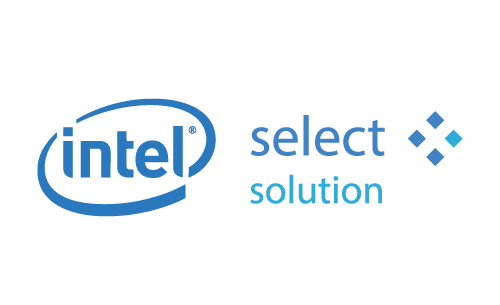| Customer |
Youth Villages (https://youthvillages.org/) Youth Villages is national leader in children’s mental and behavioral health, bringing help and hope to over 30,000 children, familiars, and young people across the United States every year. Headquartered in Memphis, TN, with 94 locations across 24 states, Youth Villages has over 3400 employees and field staff. |
| Product and Services |
|
| Industry | Non-profit |
| Organization Size | 1001 to 5000 employees |
| Country | United States |
As a non-profit organization, it was essential to find a solution that would provide significant performance improvements and be easily expandable but at a reasonable cost.
With the Azure Stack HCI solution running on Intel-validated hardware, Youth Villages has seen an immediate and consequential jump in performance metrics.

Youth Villages is a private, not-for-profit organization that works with emotionally troubled young people and their families. Based in Memphis, Tennessee, the organization has 3,400 employees, including an IT staff of 20, and an annual revenue of $244 million in fiscal year 2020, mostly from state and municipal contracts. Last year, Youth Villages provided support to more than 30,000 young
people and their families, including residential treatment, in-home treatment, foster care and adoption services, and crisis support services.
Critical to the organization’s success is the medical records system that its workers in the field use and access. In recent years Youth Villages has expanded, putting a strain on the system’s proprietary storage area network (SAN) that stores these medical records. When bottlenecks began to occur, and storage costs rose commensurately, the organization made the decision to replace its SAN with a Microsoft Azure Stack HCI solution that combines software-defined compute and storage with industry-standard hardware from technology partners such as Intel. Microsoft’s hyper-converged infrastructure (HCI) solution includes Hyper-V for virtualization and Storage Spaces Direct for software-defined storage, as well as Windows Admin Center, which allows for Azure Stack HCI management from a single pane of glass.

Finding the Solution
Scott Palmer, CIO at Youth Villages, noted that, as a non-profit organization, it was essential to find a solution that would provide significant performance improvements and be easily expandable but at a reasonable cost. After researching datacenter trends, Benjamin Clements, President of Strategic Online Systems Inc., Youth Villages’ implementation partner, discovered that Microsoft was developing a software-defined solution that could use non-proprietary, industry-standard hardware, and could provide a straightforward upgrade path in the future.
“Microsoft is bringing enterprise storage to the masses in a way that most companies couldn’t previously afford,” says Clements. “It’s a complete SAN replacement solution that takes advantage of new technologies like NVMe SSDs and RDMA networking.”
“Microsoft is bringing enterprise storage to the masses in a way that most Companies couldn’t previously afford.”
Benjamin Clements,
President, Strategic Online Systems Inc.
Strategic Online Systems, Inc. is also a long-time partner with DataON, an exclusive Microsoft partner known for its expertise with designing, deploying, and supporting Azure Stack HCI solutions. DataON is also an Intel technology partner and uses Intel technologies in its Azure Stack HCI solution such as 3rd Gen Intel Xeon Scalable processors, Intel Optane memory and SSDs, and NVMe SSDs. Most of DataONʼs solutions are verified Intel Select Solutions for Azure Stack HCI. Intel Select Solutions are workload-optimized and designed to make selecting and deploying the needed hardware and software easier. Pre-defined settings and systemwide tuning further ease deployment so businesses can take advantage of new Intel technologies faster.
Choosing the Solution
“It was an obvious choice for Youth Villages,” says Clements. “Microsoft and Intel have the experience and are constantly producing new technologies that are not only faster than previous generations, but also backward-compatible. DataON has the expertise with Azure Stack HCI and Intel technologies that gave us confidence that we had the right solution for our needs and that we would be fully supported throughout and after the deployment because every support tech has intimate knowledge of the platform.”
In addition, Youth Villages’ IT staff was familiar with Intel-based servers, hardware, and virtualization in a Microsoft environment, which made deployment of the Microsoft and Intel infrastructure easier. They could leverage existing skills from Windows Server and Hyper-V environments, and work with popular tools such as System Center.
In addition, the Azure Stack HCI solution could be managed from a single pane of glass with Microsoft’s Windows Admin Center, which provides SAN-like management and monitoring functionality. Windows Admin Center is designed to work with third party extensions such as DataON’s MUST monitoring, management and visibility tool. MUST adds to the Windows Admin Center experience with features such as historical data reporting, enhanced disk mapping, alert services, and call home services.
“Windows Admin Center with DataON MUST was another factor in choosing Azure Stack HCI because it allows us to see the entire health of the infrastructure behind the scenes, which was impossible before,” Clements adds.
Technical Results
With the Azure Stack HCI solution running on Intel-validated hardware, Youth Villages has seen an immediate and consequential jump in performance metrics. “We can have more CPUs and use more cores,” says Clements. “Our previous generation was 40 cores per node, and now we’re at 48 cores per node. I feel comfortable saying we see a fourfold increase in storage capacity and speed.”
“We can have more CPUs and use more cores. Our previous generation was 40 cores per node, and now we’re at 48 cores per node. I feel comfortable saying we see a fourfold increase in storage capacity and speed.”
Benjamin Clements
President, Strategic Online Systems Inc.
“We’re able to maintain steady input/output operations and still handle bursts. Previously bursts would slow everything else down, as would a backup or large report that was storage-centric,” Clements says.
Its first deployment of Azure Stack HCI running on Intel-validated hardware could sustain 15,000 input/output operations per second (IOPS) consistently and burst up to 150,000-200,000 IOPS. “Now, we can sustain 60,000-70,000 IOPS in a real-world environment and burst up to 500,000 IOPS. Latency with the medical records system has also dropped from 13 to 30 milliseconds to less than 1 millisecond,” Clements reports.
Youth Villages has also observed a 59X reduction in the load on storage.
Palmer explained how the Azure Stack HCI running on Intel-validated hardware has helped Youth Villages overcome limitations of its previous environment: “We had hit the limits in terms of database size, the amount of data we could run and how many concurrent copies of the medical records database we could generate,” Palmer says.
“The new infrastructure allowed us to scale up significantly and use more copies.”
With the new Azure Stack HCI, the organization can handle increased demands on a larger database. “When you have 1,000 people accessing the database servers concurrently and performing lots of storage– and CPU-harsh operations, you need to be able to scale up quickly,” he says. “We can now provide almost 1TB of RAM for SQL Server.”
Running SQL Server on the hyperconverged infrastructure was a prime consideration in the organization’s workload optimization effort. “We realize great value in virtualizing our SQL loads,” Palmer says, “because we can move them around for high availability in disaster recovery or to scale up or down to optimize operations.”
Youth Villages also uses business analytics from Tableau to leverage the SQL data from its records to run various reports. “The hyperconverged infrastructure is optimized to support the SQL load at the highest level and provide multiple copies of the data,” Palmer says. “It also allows us to scale for the performance we need.”
Business Results
Palmer reported that Youth Villages has been very happy with its Azure Stack HCI solution using Intel hardware for running its medical records system.
The organization’s deployment of the Azure Stack HCI solution has proven cost effective. “We estimate that the hyperconverged IT infrastructure will cost 70% less than a proprietary SAN and give us faster performance,” Palmer says. The fact that Azure Stack HCI utilizes industry-standard hardware instead of more expensive proprietary hardware is helpful in optimizing these costs.
Improved systems performance is an important gain for Youth Villages’ field workers and has accommodated strong growth in services provided. “Because the application now runs faster, our people in the field can complete the data entry forms and run a report in half the time it used to take. This is how we can serve more families. In 2010 we served 16,300 families. Now we are able to serve over 30,000.”
Also, by speeding up the medical records application and supporting more types of analytics Youth Villages can now ask such questions as: “How are the children doing five years out? Are they still on a good path? How are the families?” Palmer continues:
“We are able to track more than ever before because of the Microsoft hyperconverged infrastructure. On the fundraising side, we can now show donors how many more children and families we’re impacting and in what ways.”
“Our staff is excited about how the new infrastructure has allowed them to focus on the needs of the families we serve more efficiently and effectively.”




